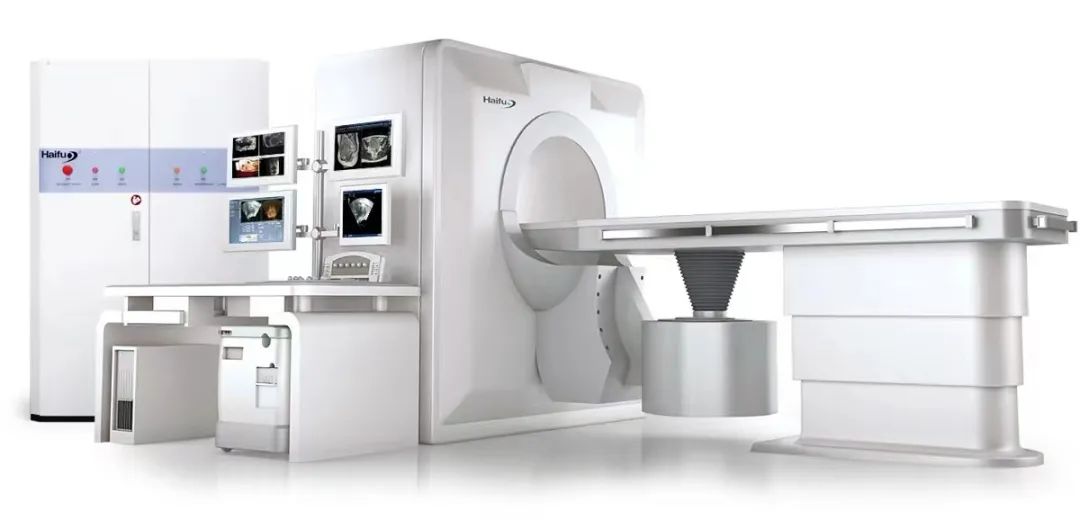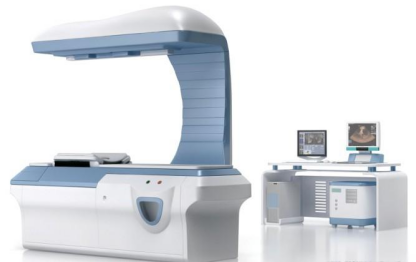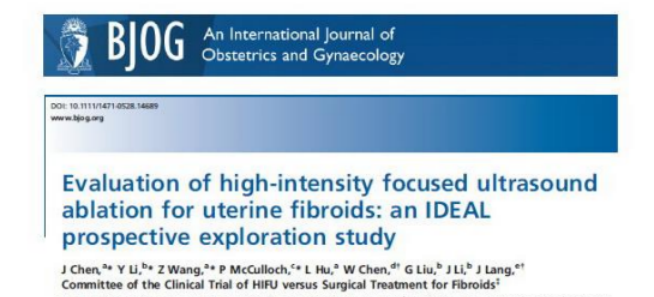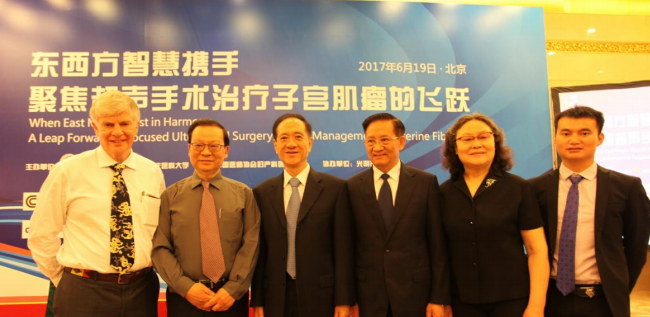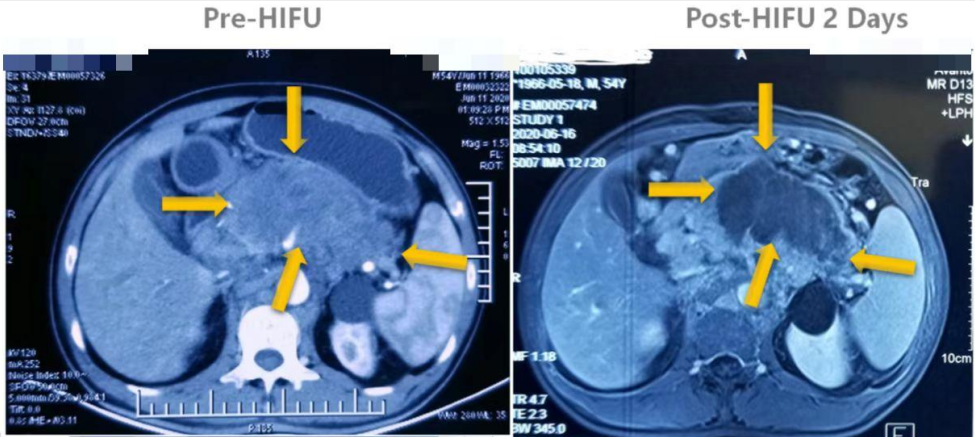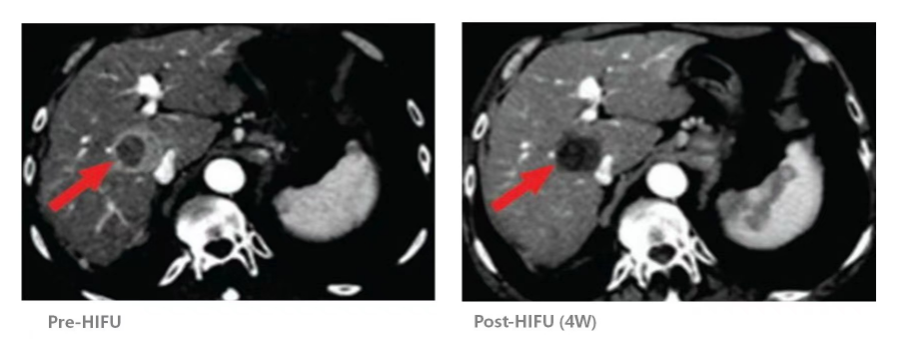HIFU Introduction
HIFU, which stands for High Intensity Focused Ultrasound, is an innovative non-invasive medical device designed for the treatment of solid tumors. It has been developed by researchers from the National Engineering Research Center of Ultrasound Medicine in collaboration with Chongqing Medical University and Chongqing Haifu Medical Technology Co., Ltd. With nearly two decades of relentless effort, HIFU has gained regulatory approvals in 33 countries and regions worldwide and has been exported to over 20 countries. It is now being utilized in clinical applications in more than 2,000 hospitals globally. As of December 2021, HIFU has been used to treat over 200,000 cases of both benign and malignant tumors, as well as more than 2 million cases of non-tumor diseases. This technology is widely recognized by numerous renowned experts at home and abroad as an exemplary non-invasive treatment approach in contemporary medicine.
Treatment Principle
The working principle of HIFU (High-Intensity Focused Ultrasound) is similar to how sunlight is focused through a convex lens. Just like sunlight, ultrasound waves can also be focused and safely penetrate the human body. HIFU is a non-invasive treatment option that uses external ultrasound energy to focus on specific target areas inside the body. The energy is concentrated to a high enough intensity at the lesion site, reaching temperatures above 60 degrees Celsius for a moment. This causes coagulative necrosis, resulting in the gradual absorption or scarring of the necrotic tissue. Importantly, the surrounding tissues and the passage of sound waves are not damaged in the process.
Applications
HIFU is indicated for various malignant tumors, including pancreatic cancer, liver cancer, kidney cancer, breast cancer, pelvic tumors, soft tissue sarcomas, malignant bone tumors, and retroperitoneal tumors. It is also used to treat gynecological conditions such as uterine fibroids, adenomyosis, breast fibroids, and scar pregnancies.
In this multi-center clinical study of HIFU treatment of uterine fibroids registered through the World Health Organization registration platform, Academician Lang Jinghe of Peking Union Medical College Hospital personally served as the chief scientist of the research group, 20 hospitals participated, 2,400 cases, more than 12 months of follow-up. The findings, published in the globally influential BJOG Journal of Obstetrics and Gynaecology in JUNE 2017, show that the effectiveness of ultrasonic ablation (HIFU) in the treatment of uterine fibroids is consistent with traditional surgery, while the safety is higher, the patient’s hospital stay is shorter, and the return to normal life is faster.
Treatment Advantages
- Non-invasive treatment: HIFU utilizes ultrasound waves, which are a type of non-ionizing mechanical wave. It is safe, as it does not involve ionizing radiation. This means that there is no need for surgical incisions, reducing tissue trauma and the associated pain. It is also radiation-free, which can help improve immunity.
- Conscious treatment: Patients undergo HIFU treatment while awake, with only local anesthesia or sedation used during the procedure. This helps to lower the risks associated with general anesthesia.
- Short procedure time: The duration of the procedure varies based on individual patient conditions, ranging from 30 minutes to 3 hours. Multiple sessions are usually not necessary, and the treatment can be completed in a single session.
- Fast recovery: After HIFU treatment, patients can generally resume eating and get out of bed within 2 hours. Most patients can be discharged the following day if there are no complications. For the average patient, resting for 2-3 days allows for a return to normal work activities.
- Fertility preservation: Gynecological patients who have fertility requirements can try to conceive as early as 6 months after treatment.
- Green therapy: HIFU treatment is considered environmentally friendly because it has no radioactive damage and avoids the toxic side effects associated with chemotherapy.
- Scarless treatment for gynecological conditions: HIFU treatment for gynecological conditions leaves no visible scars, allowing women to recover with increased confidence.
Cases
Case 1: Stage IV pancreatic cancer with extensive metastasis (male, 54)
HIFU ablated the huge 15 cm pancreatic tumor at one time
Case 2: Primary liver cancer (male, 52 years old)
Radiofrequency ablation indicated residual tumor (tumor close to inferior vena cava). The residual tumor was completely ablated after HIFU retreatment, and the inferior vena cava was well protected.
Post time: Jul-24-2023

